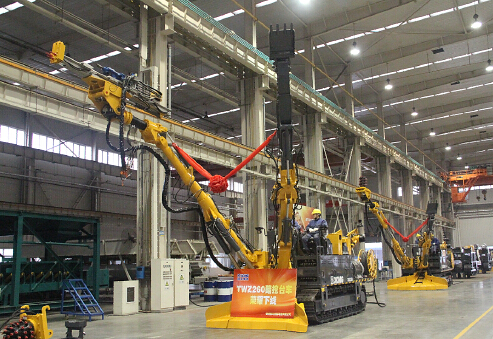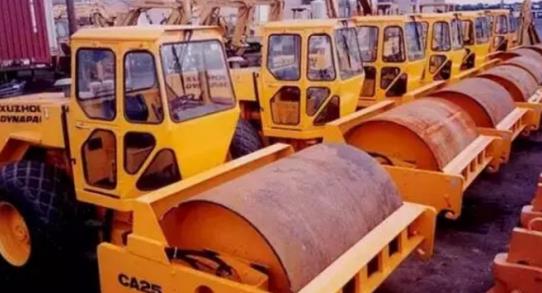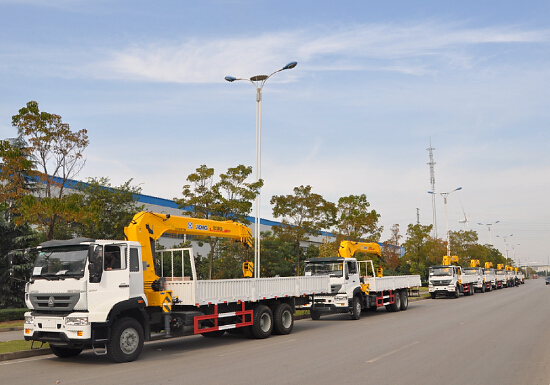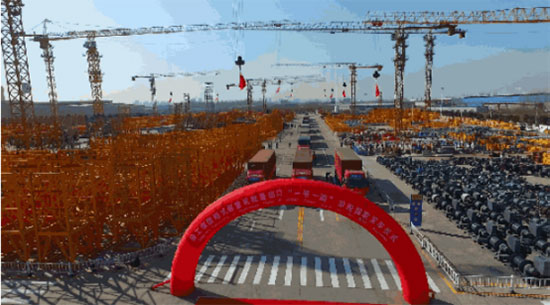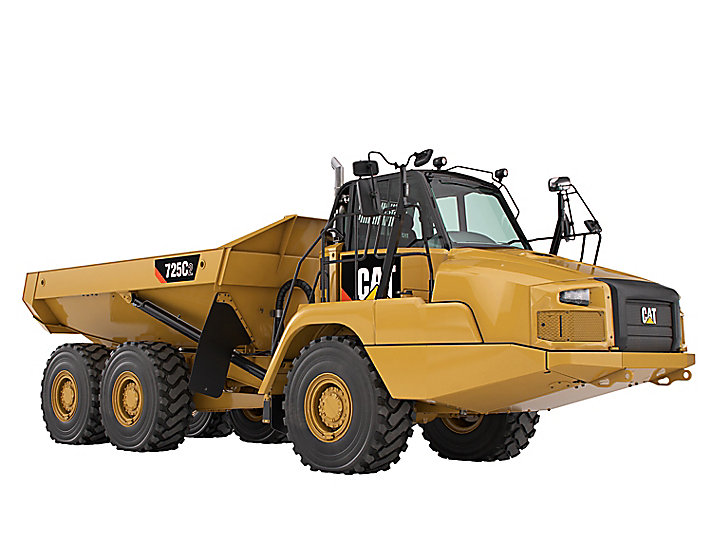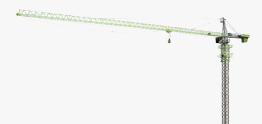 Contact Information
Contact Information
Erwann Maillot
Marketing Communication
Phone + 33 / 385 674 763
E-mail: Erwann.Maillot@terex.com
Double Duty
Sarens enlists two Terex® AC 700 cranes for a heavy tandem lift
ZWEIBRÜCKEN, Germany, July 13, 2016 – Recently, international steel construction company, Iemants, constructed an offshore oil module for Fabricom at the company’s Hoboken facility in Antwerp, Belgium. These massive modules, critical for the oil and gas production process, range in sizes reaching 25 m high, 30 m wide and 40 m long and weigh up to 2,200 tonnes. Even with a full complement of equipment at Iemants’ disposal, occasionally during module construction it is necessary to bring in heavy lifting specialists to safely pick especially heavy pieces and place them on to the module platform.
When the time came to lift and mount on top of the module a large spreader bar used to perform offshore lifting, Iemants worked with its lifting partner, The Sarens Group, to develop the most cost-effective and efficient lifting solution.
The Right Cranes
The spreader bar measured 13.5 m long, 5 m wide, and 6 m high and weighed 145 t. It had to be lifted from ground level to a placement height of 32 m, and the crane would have to work at a maximum 24-m radius during the lift. “We considered a number of options from using a single crawler crane to performing a tandem lift using two all terrain cranes,” says Erik Van der Elst, Key Account Manager for Sarens.
The advantage of the single crane option would have been that it required only one crane and crew to be mobilized. However, a crawler crane would require multiple days and more than 20 loads to transport the crane components necessary to configure it to meet 145-t lift capacity at a 24-m radius. “It would need at least 10 days to complete the entire project from mobilization to completing the lift with the single crane option,” says Van der Elst. This was too long and costly for the module lift project.
Sarens’ project managers focused on a more efficient, dual crane option, using the 700-t capacity class Terex® AC 700 all terrain crane. To meet required lifting capacity and working radius, while minimizing loads to improve mobilization efficiency, planners went with a 20.5-m main boom option, using a 4-m variable adapter to connect the 30-m luffing fly jib to the telescopic boom. “In this configuration, each AC 700 crane offers 86.5 t capacity at the 24 m radius, ample capacity to safely lift the 145-t spreader bar,” says Michael Klein, Product Marketing Manager for Terex and Demag All Terrain Cranes.
Even though this option required two cranes to be mobilized, it offered significant time and money savings. The nine-axle AC 700 all terrain crane is quickly driven to the jobsite with its complete 60-m main telescoping boom installed, while meeting 12-tonne per-axle load limits to reduce the number of loads required for transport.
Even using the two cranes, this option would cut the number of loads approximately in half compared to mobilizing a crawler crane. “We calculated a week’s time savings by using the two Terex all terrain cranes, which represented significant labor and cost savings for our customer,” explains Van der Elst. This is critical for the construction of an oil module in a depressed oil price market.
Tandem Savings
Sarens mobilized its first Terex AC 700 crane from its Wolvertem, Belgium headquarters plus eight trailers of supporting material, jib segments and counterweight to make the 27-km trip to the Hoboken jobsite. The large but nimble Terex crane reaches highway speeds of 75 km/h to quickly get from the yard to the project, and, once on site, its 8-axle steering allows the crane to quickly maneuver into position for lifting. Within a day, Sarens’ four-person work crew transported the first all terrain crane to the jobsite, rigged it with 160 t of counterweight and the 30-m luffing fly jib, and had it ready for the lifting project.
On day two, the crane went to work lifting and positioning supporting equipment in preparation for placement of the spreader bar. “The first crane on site placed the lifting supports, rigging for the platform and a radar mast,” mentions Van der Elst. “At the same time, we moved our second crane to the jobsite and had a different four-person crew prepare and position that AC 700 for the spreader bar lift.”
The morning of day three both cranes were in position for completing the critical lift. To avoid the potential of weight overload on one of the cranes, Sarens’ lift plan included positioning a 160-t capacity swivel beam in between the spreader bar and cranes’ hook blocks. “This provided perfect weight distribution of the load between the two cranes,” says Van der Elst.
To start the spreader bar lift, the two crane booms worked at a 22-m radius, and, as the lift progressed, the boom radius decreased to 17 m as the two cranes swiveled the load into position. While placing the spreader bar atop the module, both cranes were operating at a 24-m radius, and the two booms were less than a couple of meters apart. “The responsive controls of the AC 700 cranes give our operators very precise movements of the boom and load, which allows us to confidently complete intricate tandem lifts like this,” offers Van der Elst.
With the lift complete, both four-person crews derigged their respective AC 700 cranes, and the lifting equipment convoy traveled back to Sarens’ Wolvertem yard. In just three days, the dual crane option safely and efficiently placed the spreader bar plus supporting equipment onto the oil module, seven days faster than what was estimated for the single crane option. More importantly, going with a tandem approach saved Sarens’ customer money.
About The Sarens Group
The Sarens Group, with its Belgium-based head office (Wolvertem), has been providing heavy lift, engineered transport and specialized rigging services for more than 60 years. With state-of-the-art design tools and one of the world’s largest inventories of cranes, transporters and specialty rigging equipment, along with a team of highly skilled professionals, the Sarens Group is an international market leader in its field. Employing more than 4,200 dedicated employees who embody the spirit of the company’s motto, “Nothing too heavy, Nothing too high,” the Sarens Group is well prepared to support its customers’ heavy lift, engineered transport and specialized transport requirements around the globe and across every market sector.
For more information on The Sarens Group, visit http://www.sarens.com.
About Terex
Terex Corporation is a lifting and material handling solutions company reporting in five business segments: Aerial Work Platforms, Construction, Cranes, Material Handling & Port Solutions and Materials Processing. Terex manufactures a broad range of equipment serving customers in various industries, including the construction, infrastructure, manufacturing, shipping, transportation, refining, energy, utility, quarrying and mining industries. Terex offers financial products and services to assist in the acquisition of Terex equipment through Terex Financial Services. Terex uses its website (www.terex.com) and Facebook page (www.facebook.com/TerexCorporation) to make information available to its investors and the market.



